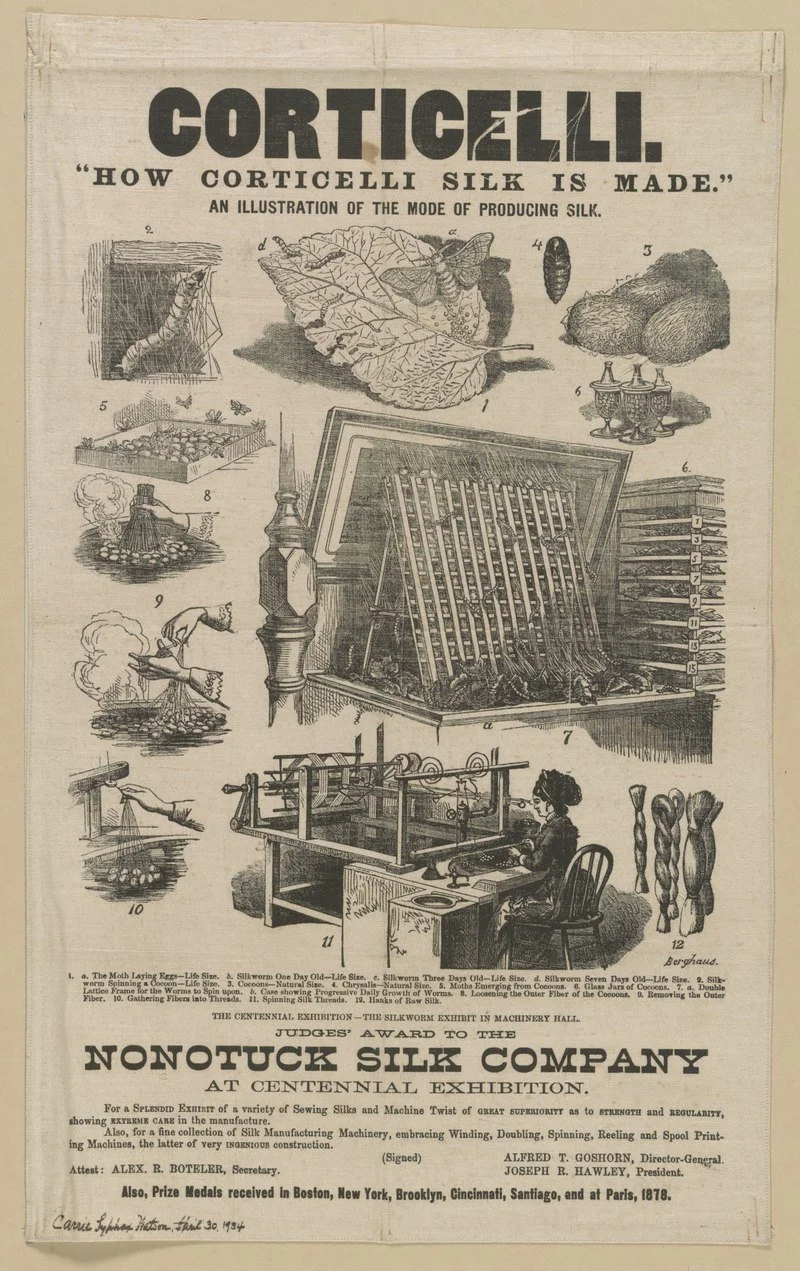
Soothing with silk
“Imitating Symmetry” (silk), by Boston artist Evan Rosenberg, in his show “Mantra,’’ at Galatea Fine Art, Boston, through July 31.
He tells the gallery:
"My work utilizes silk as a medium to capture, interpret and cope with the chaotic and uncontrollable realities of the world around me. My interest in this material was born out of my research at a biotech startup, which uses silk protein to stabilize vaccines. Intrigued by the possibilities of silk as a material for art, I began exploring its properties and limitations by weaving it into three-dimensional spaces.
“The work I do is grounded in repetition and meditation. As I create, I am driven deeply into self-reflection and meditation. I use the work to disconnect from my thoughts and impulses and guide me into a flow state.’’
Nonotuck Silk Co. advertisement for Corticelli silk showing the stages of silk production.
Nonotuck Silk Company (1832-1930 in various incarnations) produced silk thread at a mill in Haydenville, Mass. It was established as the North Hampton Silk Company and operated for years by members of a utopian society active in abolitionism. The company later acquired the Corticelli Silk Mills, in Leeds, Mass., and became the Corticelli Silk Co.
Celebrating Snow Farm
“Raku Vessel, ‘‘ by Bob Green in the show ,“Makers and Mentors: The Art and Life of Snow Farm—The New England Craft School,” opening Nov. 28, at the Fuller Craft Museum, in Brockton, Mass., celebrates how contemporary craft has been affected by Snow Farm, the famed 50-acre craft school in the western Massachusetts town of Williamsburg, which used to be a minor factory town.
1886 print of the Haydenville section of Williamsburg by L.R Burleigh with listing of landmarks depicted.
The biggest event in Williamsburg’s history — this from Wikipedia:
“On the morning of May 16, 1874, a flood along Williamsburg's Mill River claimed 139 lives and left nearly 800 victims homeless throughout Hampshire County. The deluge occurred when the Williamsburg Reservoir Dam unexpectedly burst, sending a twenty-foot wall of water surging into the valley below. Every town and village along the river's normally placid flow was soon devastated by the great rush of water. Much of the flood's force was abated in Northampton, at the Mill River's confluence with the Connecticut River. Located over twelve miles from the breached dam in Williamsburg, Northampton was the last town to experience the flood's fury, with four additional victims swept away.’’




